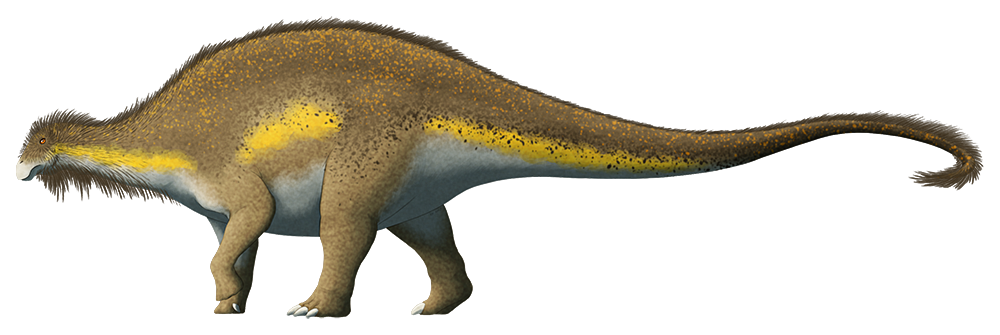Amargasaurus cazaui was a sauropod dinosaur with a very distinctive-looking skeleton, sporting a double row of long bony spines along its neck and back. It lived in what is now Argentina during the Early Cretaceous, about 129-122 million years ago, and was fairly small compared to many other sauropods, reaching about 10m in length (~33′) with a proportionally short neck compared to its body size.
And despite being known from fairly complete skeletal remains there’s still a lot we don’t know about this dinosaur – especially what was actually going on with those vertebral spines. While it’s sometimes been depicted with skin sails over the spines, for the last couple of decades the general opinion has trended towards them being more likely to have been covered by spiky keratinous horn-like sheaths.
But recently that’s been brought back into question. A detailed study of the microscopic bone structure of Amargasaurus‘ spines shows no evidence for keratin attachment and instead found textures associated with skin coverings, along with an extensive web of ligaments connecting the spines to each other along each row.
So maybe it had big flashy sails after all!


